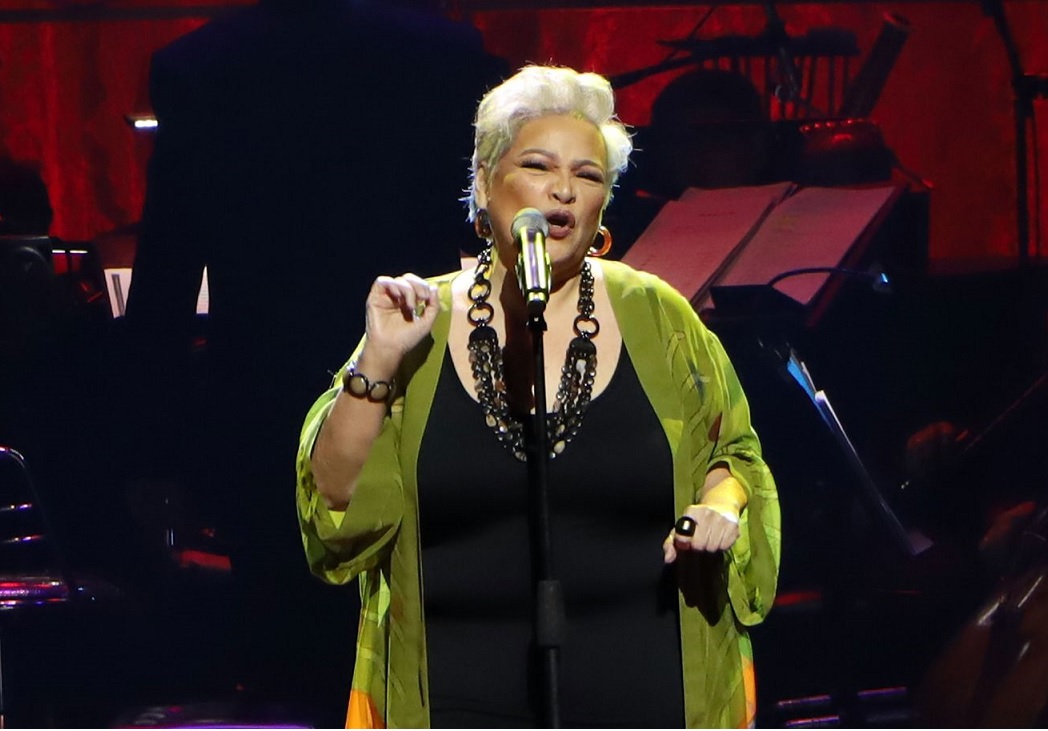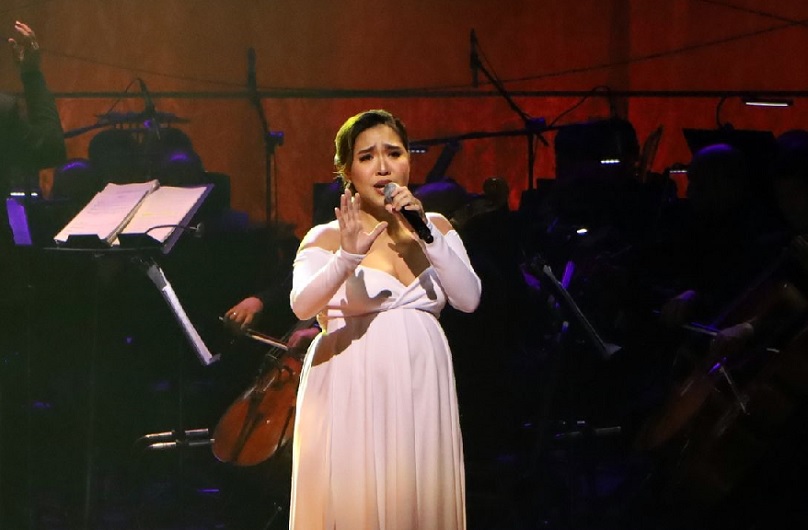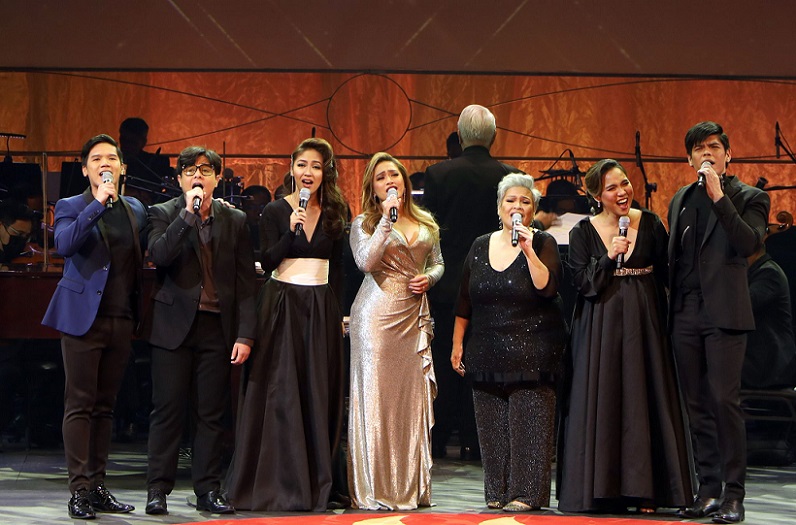
The Cultural Center of the Philippines observed its 54th year with a new president and a temporary venue (the Samsung Theater for Performing Arts) while the original main theater edifice is undergoing a three-year renovation.
CCP Vice-President and Artistic Director Dennis N. Marasigan and President Michele Nikki Junia in their message said, “While this is the first time, we are celebrating our founding anniversary outside our home, we reiterate that CCP is more than just a building. Anywhere there are artists passionately performing, anywhere there are audiences who are willing to experience arts, anywhere we can create and engage in art-making, CCP will always be present. CCP is anywhere and everywhere.”
The country’s leading temple of the arts opened on September 8, 1969 with National Artist for Film Lamberto Avellana’s grand tableau, Golden Salakot: Isang Dularawan, an epic portrayal of Panay Island. Then California Governor Ronald Reagan with wife, Nancy Regan, were among the foreign guests representing President Richard Nixon.
The Saturday night (Sept. 9) opening were devoid of celebrities but the National Artist for Dance Alice Reyes showed up in a gesture of support.
The new CCP president and board came in full force namely Michelle Nikki Junia, former president Margie Moran Floirendo and board of trustee’s members Benedict Carandang and Lorna Kapunan.
Looking back, the CCP was not the only venue for the performing arts at the turn of the century.
On October 16, 1907, the Manila Grand Opera House opened and one of its distinguished foreign guests was one of the first generation of prima ballerina assolutas, Anna Pavlova.
The Manila Metropolitan Theater opened in 1931, the Far Eastern University (FEU) Auditorium on November 5, 1949 with the Russian-born Alexandra Danilova gracing the occasion. The Philamlife Auditorium welcomed its first concert audiences in 1961. (The theater was demolished at the height of the pandemic.)
The Meralco Theater opened on March 22, 1969 with celebrated American diva Beverly Sills performing with the CCP orchestra under PPO’s first music director, Luis Valencia.
Back to the present, the anniversary concert on a matinee (Sept. 10) was equally well-attended.

Called “Anywhere We Sing is Home,” the presentation was limited to Broadway fare and OPM songs (mainly be National Artist Ryan Cayabyab) and with theater actors mostly alumni of Miss Saigon and Les Miz revivals here and abroad.
Joanna Ampil with the Philippine Philharmonic opened with Broadway favorites from Sunset Boulevard (As If We Never Said Goodbye) and Funny Girl (Don’t Rain on My Parade).
Ampil, who made history by playing role of The Engineer in Miss Saigon (traditionally a male character) in last year’s UK production, is a visual and vocal delight.
Moreover, we thought there were more belting than singing and virtual replay of the Barbra Streisand magic. Decades of listening to Broadway music by distinguished Filipino singers taught us that there are other ways of sounding original without being a virtual copycat of previous interpreters.

It was a relief when other singers (Gerald Santos and Aicelle Santos-Zambrano) joined her for the Medley (Nais Ko, Hahanapin Ko, Narito Ako). She actually does better as member of singing ensemble.
No doubt an original voice with a vocal style all her own, Santos-Zambrano easily connected with her audience in the Chorus Line solo, What I Did for Love. The sound is velvety and pure and the style simple yet grand in her own way. After her first solo number, it was obvious she was one of the crowd favorites.
We saw the best of her with Gerald Santos in the Miss Saigon duets (Sun and Moon and Last Night of the World).
His solo number, Hanggang (by Roni and Gilda Cordero) revealed his distinct vocal sound, thoroughly full and engaging.
You knew Sheila Francisco was going to be special when she joined a duet with Ampil (Happy Talk from South Pacific) and later in a Broadway favorite, Bali Hai. This is a solo piece but the arrangement of Orlando de la Cruz reduced the South Pacific favorite into a duet towards the end. Still, the presence of Francisco in this Broadway number was simply mesmerizing. How she intoned the mystical Rodgers and Hammerstein favorite made one recall the many islands surrounding my home province. (One couldn’t help recall the hair-raising version of Dulce when she sang it with the PPO in the 90s.)
Francisco got her solo number in Some People from the Julie Styne musical, Gypsy.
The minute she settled in some spoken lines and hit the melodic chords; one knew this night was made for her —
Some people can get a thrill
Knitting sweaters and sitting still.
That’s okay for some people
Who don’t know they’re alive.
Some people can thrive and bloom
Living life in the living room.
That’s perfect for some people
Of one hundred and five.
She has a distinct sound coming from the pit of Gypsy Rose. Her acting and singing were so closely knit you forget you are slowly ushered into another world.
The roar of approval from the audience was deafening they could have started a standing ovation. Except that it was not yet the end of the concert.
What followed after the earthshaking Gypsy solo turned out to be anti-climactic.
The Michel Legrand Medley rendered by Sheila Francisco, Gab Pangilinan, Reb Atadero, Ferrer and Gerald Santos provided apt intermission (there was none) for the excitement created by the Filipino Gypsy Rose.
The hushed excitement came back in Ferrer’s Awit ni Isagani, again from a Cayabyab musical, El Filibustirismo.
With his operatic background, Ferrer added more pathos and distilled nuances to the song. He delivered what sounded like a closed-throat but haunting pianissimo at the end. The audience got wild again for the young tenor after the Gypsy number of Francisco.
Two song numbers from Rama Hari (again by Cayabyab) livened the concert revealing the immense vocal talent of Gab Pangilinan and later in a well-received duet with the night’s other sensation, Arman Ferrer.
Of course, the night looked like a tribute to the National Artist for Music with songs by him and excerpts from musicals by him and with an added charming, if, touching stage ritual of father handing down the baton to an equally gifted son, Toma Cayabyab.
Next in Line by Wency Cornejo arranged by Naldy Rodriguez closed the anniversary concert.
The anniversary concert went very well despite one’s reservations to song choices mostly by the composer who is also the conductor.
The tight direction by Floy Quintos worked immensely and the PPO did justice to both Broadway and Filipino musicals.
Here’s to CCP 55th year and hoping the next time will see a wide array of Filipino composers and not just from the titled ones.


